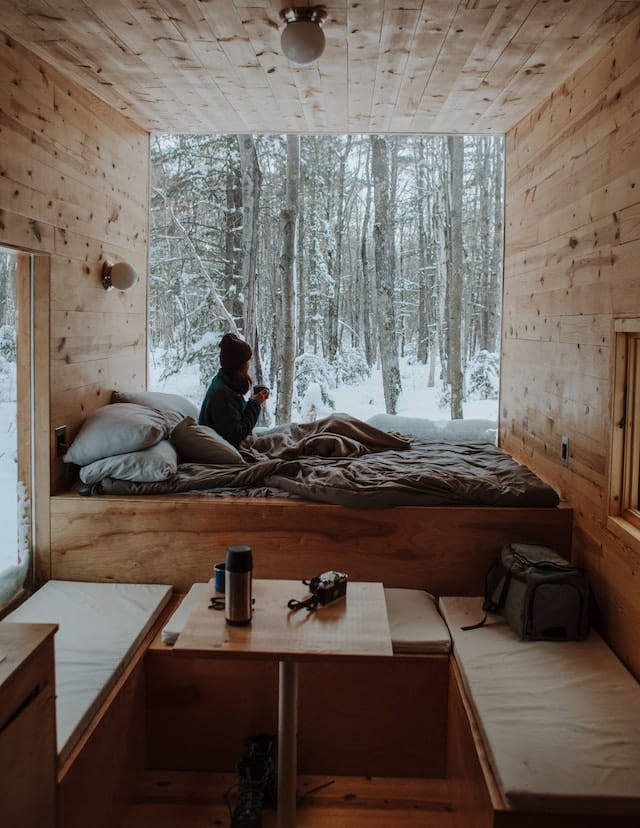The benefits of eco-friendly homes

In the face of the escalating global climate crisis, it is essential for us to explore and embrace sustainable living practices. One of the most effective ways to reduce our environmental footprint is by investing in eco-friendly homes. These homes are designed to be energy-efficient, utilize renewable materials, and promote healthier living environments. This article delves into the benefits of environmentally friendly homes, highlighting their financial, health, and sustainability advantages.
Lower Energy Costs
A significant advantage of eco-friendly homes is their potential to drastically reduce energy consumption. These buildings use design elements and technologies that decrease the reliance on nonrenewable energy sources.
Also to read : How to reduce your energy consumption
Eco-friendly homes often incorporate features such as solar panels, geothermal heating, and energy-efficient appliances. These features harness natural resources to generate energy, reducing the dependence on external electricity sources. Furthermore, energy-saving measures such as LED lighting, advanced insulation, and double-glazed windows help to minimize energy waste by retaining heat during winter and reducing the need for air conditioning in summer.
The cumulative result of these energy-saving features is a significant reduction in household electricity bills. Over time, the cost savings in utility bills can offset the initial investment required to make a home eco-friendly.
In the same genre : Tips for preventing mold in your home
Enhanced Indoor Air Quality
Eco-friendly homes aren’t just about energy efficiency and sustainability. They’re also about creating healthier living environments.
Conventional homes often contain volatile organic compounds (VOCs), which are emitted by common household items like paint, cleaning products, and synthetic materials. Exposure to VOCs can have detrimental health effects, including headaches, dizziness, and respiratory problems.
Eco-friendly homes, however, are designed with indoor air quality in mind. They make use of non-toxic materials and paints, reducing the potential exposure to harmful substances. Moreover, these homes often have efficient ventilation systems that regularly circulate fresh air, removing potential pollutants and maintaining a healthier indoor environment.
Contribution to Environmental Conservation
By opting for an eco-friendly home, you play an active part in environmental conservation. This is arguably the most profound benefit of sustainable housing.
Eco-friendly homes are typically constructed with renewable or recycled materials, reducing the demand for virgin resources and minimizing waste. Additionally, the energy-efficient features of these homes contribute to reducing greenhouse gas emissions, a major factor in climate change.
These homes often incorporate water-saving measures as well, such as rainwater collection systems and greywater recycling. These methods conserve water by reusing it for tasks like irrigation or toilet flushing, thereby reducing your overall water consumption.
Increased Property Value
In today’s market, sustainability is not only desirable but also valuable. Eco-friendly homes often have a higher market value compared to traditional houses.
The unique features and benefits of eco-friendly homes, such as energy efficiency and improved indoor air quality, make them increasingly attractive to potential buyers. This heightened demand, coupled with the potential for lower running costs, often leads to a higher property value.
Furthermore, as public awareness of environmental issues grows, it’s likely that the demand for eco-friendly homes will continue to rise, making these properties a sound investment for the future.
Long-Term Sustainability
Lastly, eco-friendly homes are designed for long-term sustainability. They are built to last, using high-quality, durable materials that require less maintenance and offer greater longevity than conventional construction materials.
Furthermore, the use of renewable energy sources like solar or wind ensures a sustainable power supply that isn’t susceptible to the price volatility or environmental harm associated with fossil fuels. This long-term sustainability translates into consistent energy savings and resilient living conditions.
In conclusion, eco-friendly homes offer a host of benefits that extend beyond their green credentials. They present a practical solution for energy conservation, healthier living conditions, environmental protection, financial savings, and long-term sustainability. As we continue to grapple with the repercussions of climate change, investing in an eco-friendly home is not just a wise decision—it’s a necessary one.
Eco-friendly Homes: A Solution for Climate Change
Investing in an eco-friendly home is more than just saving on energy costs and creating a healthier living environment. These homes also play a crucial role in combating climate change.
Climate change is largely driven by human activities that release greenhouse gases into the atmosphere, including the burning of fossil fuels for electricity and heat. The design and operation of conventional homes contribute significantly to this problem. According to the U.S. Environmental Protection Agency, residential energy use accounts for about 20% of greenhouse gas emissions in the United States.
By contrast, eco-friendly homes significantly reduce these emissions by using renewable energy sources like solar and wind, and by incorporating energy-efficient appliances and insulation. The use of renewable materials in construction also minimises waste and reduces the demand for virgin resources, further decreasing the environmental impact.
Moreover, many eco-friendly homes are designed to be resilient against climate change effects. For instance, they may incorporate features for water conservation and management, like rainwater collection systems and green roofs, that help to mitigate flooding and drought. Their design and materials may also be chosen for resilience against extreme weather events like heatwaves and storms.
Therefore, choosing an eco-friendly home is not only a personal step towards sustainable living, but also a contribution to the global effort to combat climate change.
Conclusion: Embracing the Eco-friendly Home Revolution
In summary, eco-friendly homes offer a range of benefits, from financial savings and improved health to environmental conservation and climate resilience. They represent an effective and practical solution for individuals to reduce their environmental impact and contribute to the fight against climate change.
However, it’s important to note that the transition to eco-friendly homes is not just a matter for individuals. Governments, businesses, and community organizations also have a role to play in promoting and facilitating this transition. Policies and incentives are needed to make eco-friendly homes more accessible and affordable, and to encourage their adoption.
As we face the escalating challenges of climate change, the shift towards eco-friendly homes is no longer an option, but a necessity. By embracing this revolution in home construction and design, we can all play a part in creating a sustainable future for our planet. It’s not just about building houses – it’s about building a better world.
In the words of renowned designer and innovator Buckminster Fuller, "We are called to be architects of the future, not its victims." Let us then rise to this call by investing in eco-friendly homes, and in doing so, architect a future that is not only sustainable but also healthy, prosperous, and resilient.
